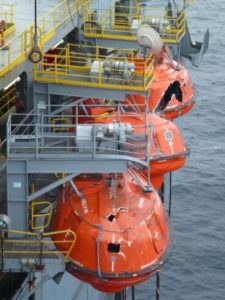 An offshore drilling company faced penalties following a significant incident where a crane boom collapsed, resulting in a chaotic scene on March 31, 2016. Fortunately, no injuries were reported, but the collapse of the Rowan Gorilla VII’s boom led to flying debris damaging a nearby vessel, a hose going out of control before rupturing, and the release of a cloud of cement dust.
An offshore drilling company faced penalties following a significant incident where a crane boom collapsed, resulting in a chaotic scene on March 31, 2016. Fortunately, no injuries were reported, but the collapse of the Rowan Gorilla VII’s boom led to flying debris damaging a nearby vessel, a hose going out of control before rupturing, and the release of a cloud of cement dust.
Inspectors from the Health and Safety Executive (HSE) labelled the incident as an “accident waiting to happen.” The event occurred in the North Sea as staff were preparing to recover a faulty submersible pump. The crane operator raised the boom to clear one of the installation’s legs, and it failed catastrophically, collapsing.
The HSE investigation revealed that the immediate cause of the collapse was Rowan Drilling (UK) Limited’s failure to check a limit switch designed to prevent the crane boom from reaching the point of mechanical failure. Three out of four boom sections fell into the sea between the rig and the ‘Solvik Supplier’ supply vessel, causing damage. The boom tip snagged a flexible hose, leading to its rupture and whipping back onto the vessel, enveloping it in cement dust.
While no injuries occurred, there were at least five Rowan employees on and around the crane during the collapse, and thirteen crew members were on board the Solvik Supplier. The investigation also discovered that safety mechanisms, preventing inadvertent operation of crane controls, had been overridden, leading to an Improvement Notice for the company to address issues related to limit switches and management.
Rowan Drilling (UK) Limited pleaded guilty to violating Section 2(1) and Section 3(1) of the Health and Safety at Work etc. Act 1974. The company received a £130,000 fine at Aberdeen Sheriff Court on December 21, 2023.
HSE inspector Brian Kennedy emphasised the sheer luck that no serious injuries occurred due to these failings. He highlighted the incident as a result of a defective safety management system, emphasising the importance of maintaining and testing crane limit switches to ensure consistent protection.

